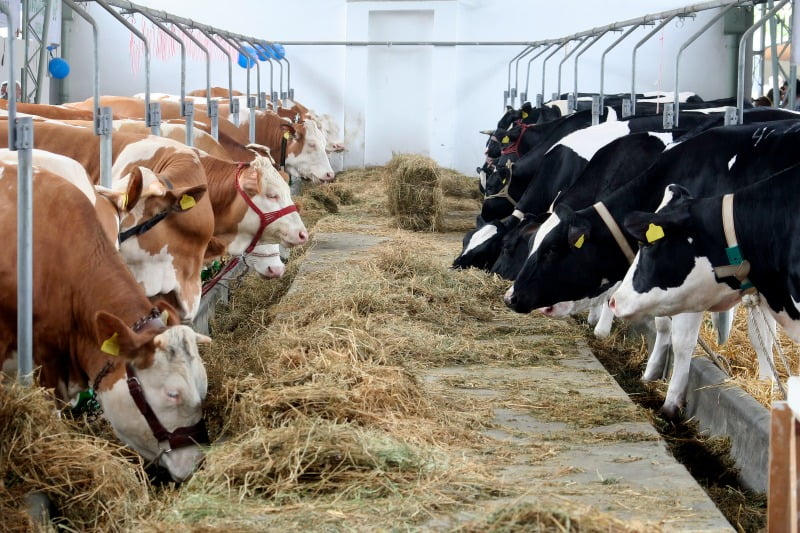O futuro da produção animal – mesmo intensiva – passa pela sustentabilidade - Bibliografia
A produção animal como é sabido tem um forte impacto ambiental. Contudo, também existe poluição no processamento de alimentos e muito desperdício em toda a cadeia alimentar, aspetos que devem ser mitigados. A saúde ambiental e a importância que tem na saúde animal e humana deve ser analisada à luz do conceito One Health, e esta análise tem de ser adaptada à geografia, pois existem diferentes necessidades de alimentos e dietéticas nos diferentes continentes. Existem sistemas alternativos de produção animal, agro-ecológicos, que minimizam os impactos na saúde ambiental, animal e humana.

BIBLIOGRAFIA
Allard, V., 2002. A la recherche d’une agriculture durable. Etude de syste`mes herbagers e´conomes en Bretagne. Paris: INRA editions.
Alsaffar, A., 2016. Sustainable diets: The interaction between food industry, nutrition, health and the environment. Food Science and Technology International, 22, 102–111.
Barilla Center for Food and Nutrition, 2013. Double Pyramid: Healthy Food for All, Sustainable Food for the Environment. Site disponível: Barrila Center, For Food and Nutrition URL: https://www.barillacfn.com/m/publications/pp-double-pyramid-healthy-diet-for-people-sustainable-for-the-planet.pdf. Consultado em 15 Dez. 2020.
Duchin, F., 2005. Sustainable consumption of food –A framework for analyzing scenarios about changes in diets. Journal of Industrial Ecology 9 (1-2), 99-114.
Dumont, B., Fortun-Lamothe, L., Jouven, M., Thomas, M. e Tichit, M., 2013. Prospects from agroecology and industrial ecology for animal production in the 21st century. Animal ,7:6, 1028–1043.
Food Standards Agency, 2006. FSA Nutrient and Food Based Guidelines for UK Institutions. Site disponível: Food Standards Agency
URL: https://www.ptdirect.com/training-design/nutrition/national-nutrition-guidelines-united-kingdom. Consultado em 12 Dez. 2020.
Gliessman, S., 2006. Animals in agroegroecosystems. Agroecology: the ecology of sustainable food systems, pp. 269-285.
Grace, D., 2014. The business case for One Health. Onderstepoort Journal of Vecterinary Research 81, pp. 1-6.
National Health and Medical Research Council, 2013. Australian Dietary Guidelines. Site disponível: eatforhealth.gov.au
URL: https://www.eatforhealth.gov.au/sites/default/files/files/the_guidelines/ n55_australian_dietary_guidelines.pdf. Consultado em 10 Dez. 2020
Salter, A., 2018. The effects of meat consumption on global health. Scientific and Technical Review 37, 47-55.
Roy, P., 2014. Environmental sustainability in food processing. Tiwari BK, Norton T and Holden M (eds) Sustainable Food Processing, pp. 39-62.
Perry, B. D., Robinson, T. P, Grace, D. C., 2018. Review: Animal health and sustainable global livestock systems. Animal, 12:8, 1699–1708.
Olmez, H., 2014. Water Consumption, Re-use and reduction strategies in food processing. In: Tiwari BK, Norton T and Holden NM (eds) Sustainable Food Processing, pp. 401-434.
Okos, W., 2011. Suistainable food processing systems - Patch to a zero discharge: Reduction of water, waste and energy. Pocedia Food Science, pp. 1768-1777.
U.S. Department of Agriculture and U.S. Department of Health and Human Services, 2010. Dietary Guidelines for Americans. Site disponível: health.gov URL: https://health.gov/our-work/food-nutrition/previous-dietary-guidelines/2010. Consultado em 19 Dez. 2020
Veen, P., 2009. Grasslands in Europe of high nature value. Devon, UK: NHBS Distribution.
Wang, L., 2014. Energy consumption and reduction strategies in food processing. Tiwari BK, Norton T and Holden NM (eds) Sustainable Food Processing, pp. 377-400.